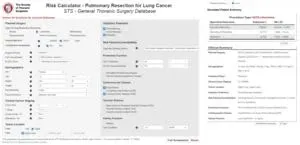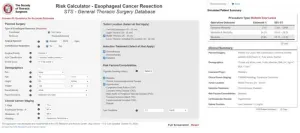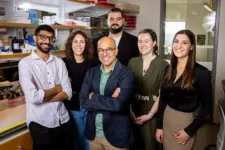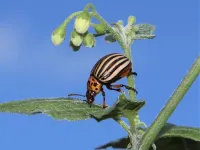(Press-News.org) URBANA, Ill. — The foundation for healthy eating behavior starts in infancy. Young children learn to regulate their appetite through a combination of biological, psychological, and sociological factors. In a new paper, researchers at the University of Illinois Urbana-Champaign propose a model that explores these factors and their interactions, providing guidelines for better understanding childhood appetite self-regulation.
“When we talk about obesity, the common advice is often to just eat less and exercise more. That’s a simplistic recommendation, which almost makes it seem like an individual's willpower solely determines their approach to food,” said lead author Sehyun Ju, a doctoral student in the Department of Human Development and Family Studies, part of the College of Agricultural, Consumer and Environmental Sciences at Illinois.
Appetite self-regulation is related to general self-regulation, but it specifically concerns an individual’s ability to regulate food intake, which affects healthy development and obesity risk. Children are born with a capacity to regulate appetite based on hunger and satiety signals, but with increased exposure to environmental factors, their eating is increasingly guided by psychological reasoning and motivations. Therefore, it is important to take a developmental perspective to trace changes in eating behaviors over time, Ju stated.
Ju and her colleagues provide a comprehensive framework based on the biopsychosocial pathways model, which outlines three interacting categories: Biological factors, including sensory experience, physiological hunger and satiety signals, brain-gut interaction, and the influence of the gut microbiome; psychological factors, including emotional self-regulation, cognitive control, stress regulation, and reward processing; and social factors, such as parental behavior and feeding practices, culture, geographic location, and food insecurity.
The researchers combine this framework with temperamental theory to explore how the pathways are modified by individual temperament.
Children react differently to stimuli based on their psychological and emotional make up, Ju explained. For example, openness to novelty and positive anticipation can affect whether a child is willing to try new foods. If a parent pressures their child to eat, it could be counter-productive for a child with heightened sensitivity to negative affect, causing the child to consume less.
The model also takes children’s developmental stages into account. Infants have basic appetite regulation based on physiological cues. They gradually become more susceptible to external influences and by age 3-5 children begin to exhibit greater self-control and emotional regulation.
“By analyzing the pathways outlined in our model, we can better understand the combined influences of multiple factors on children's appetite self-regulation and their motivations to approach food,” Ju said. “For example, the presence of palatable food may not generate similar responses in everyone. Children could approach food as a reward, for pleasure-seeking, or to regulate emotions. The underlying motivations can be diverse, and they are influenced by external factors as well as temperamental characteristics.”
Socio-environmental influences include parent-child interactions around food, as well as non-food-related caregiver practices that can impact the child’s emotional regulation. The household food environment, cultural value of food intake, and food availability are also important factors, the researchers stated.
Scientists can use the model to guide their research, focusing on specific pathways based on their topic of interest.
For example, Ju and co-author Kelly Bost, professor of child development in HDFS, are conducting an empirical study investigating parent-child interactions during mealtime. Parents filled out questionnaires, and family mealtimes were videotaped, so the researchers could gauge the dyadic interaction between child and caregiver. The research team then looked at the children’s approach or withdrawal towards food and evaluated how temperament modulated those associations.
“If we understand the differential susceptibility to various factors, we can identify and modify the environmental influences that are particularly obesogenic based on children's temperamental characteristics. Then we will be able to provide more refined approaches to support children's healthy eating behavior,” Ju explained.
“Or, if children experience food insecurity, they might demonstrate certain reward responses towards food stimuli. Even if food insecurity is alleviated, we may still need to help children build a secure, positive relationship with food that is not stress-induced or that does not use food as a primary means to fulfill their emotional needs. If we understand the pathways, we could tailor our approaches to support children by addressing all these factors,” she concluded.
The study was part of the STRONG Kids 2 project, which investigates how individual biology interacts with the family environment to promote healthy eating habits in young children.
The paper, “Biopsychosocial pathways model of early childhood appetite self-regulation: Temperament as a key to modulation of interactions among systems,” is published in Social Science & Medicine [DOI:10.1016/j.socscimed.2024.117338]. Authors include Sehyun Ju, Brent McBride, Merin Oleschuk, and Kelly Bost.
END
Raising happy eaters: Unlocking the secrets of childhood appetite
2024-10-17
ELSE PRESS RELEASES FROM THIS DATE:
The Society of Thoracic Surgeons launches two new thoracic surgery risk calculators
2024-10-17
CHICAGO, IL – October 17, 2024 – The Society of Thoracic Surgeons (STS) announces the release of two new risk calculators to inform physician-patient decision-making in thoracic surgery. Engineered using contemporary data from the STS General Thoracic Surgery Database, these interactive tools provide surgeons with accurate, preoperative risk estimations for outcomes of esophagectomy for cancer and pulmonary resection for lung cancer.
The mobile-friendly risk calculators allow surgeons and multidisciplinary ...
FAPESP and CNR plan to launch joint call for proposals in April 2025
2024-10-17
FAPESP representatives visited the headquarters of Italy’s Consiglio Nazionale delle Ricerche (CNR) in Bologna on October 16th to sign a new work plan that will enable the implementation of a cooperation agreement signed by the institutions in December 2023.
The aim is to enable joint funding of research projects in the following areas: Cultures, Inmaterial Heritage, Interdisciplinary Networks; Agri-food and Sustainable Development; Technology and Innovation; and Health and the Environment.
Researcher mobility and ...
Smaller, more specific academic journals have more sway over policy
2024-10-17
DURHAM, N.C. – Scientists don't just want their results to be published; they want them to be published in the most influential journal they can find. This focus on a high 'impact factor' is driven by their concerns about promotion and tenure, but it may be overlooking the important role that smaller publications can play in the advancement of their science.
A new paper, “Role of low-impact-factor journals in conservation implementation,” appearing Oct. 17 in the journal Conservation ...
Medicaid ACOs have not yet improved care for kids with asthma
2024-10-17
In its first three years of operation, Medicaid’s primary care-focused Accountable Care Organizations (ACOs) in Massachusetts showed “no clear evidence of success” in improving asthma care for children, according to research led by the University of Massachusetts Amherst and UMass Chan Medical School-Baystate Health.
The study, published recently in JAMA Pediatrics, compared the asthma care of Medicaid-insured children affiliated with a Medicaid ACO to that of children with private insurance. Senior author Dr. Sarah Goff, a practicing pediatrician and internist ...
New study sheds light on lily toxicity in cats; outpatient treatment may be viable option
2024-10-17
FOR MORE INFORMATION
Michael San Filippo
Senior Media Relations Manager
American Veterinary Medical Association
Cell/Text: 847-732-6194
msanfilippo@avma.org
New study sheds light on lily toxicity in cats; outpatient treatment may be viable option
(SCHAUMBURG, Illinois) October 17, 2024—A study published recently in the Journal of the American Veterinary Medical Association (JAVMA) has revealed new insights into the treatment of cats exposed to toxic lilies, offering hope for pet owners facing this common household hazard.
The study (“Prevalence of acute kidney ...
A new benchmark to recognize the hardest problems in materials science
2024-10-17
Scientists hope that quantum computing will help them study complex phenomena that have so far proven challenging for current computers – including the properties of new and exotic materials. But despite the hype surrounding each new claim of “quantum supremacy”, there is no easy way to say when quantum computers and quantum algorithms have a clear and practical advantage over classical ones.
A large collaboration led by Giuseppe Carleo, a physicist at the Swiss Federal Institute for Technology (EPFL) in Lausane and the member of the National Center for Competence in Research NCCR MARVEL, has now ...
Why do we love carbs? The origins predate agriculture and maybe even our split from Neanderthals
2024-10-17
If you’ve ever struggled to reduce your carb intake, ancient DNA might be to blame.
It has long been known that humans carry multiple copies of a gene that allows us to begin breaking down complex carbohydrate starch in the mouth, providing the first step in metabolizing starchy foods like bread and pasta. However, it has been notoriously difficult for researchers to determine how and when the number of these genes expanded. Now a new study led by The University of Buffalo (UB) and The Jackson Laboratory (JAX) showcases how early duplications of this ...
Key protein for the biosynthesis of defense steroids in solanaceous plants discovered
2024-10-17
The biosynthetic pathway of specific steroidal compounds in nightshade plants (such as potatoes, tomatoes and eggplants) starts with cholesterol. Several studies have investigated the enzymes involved in the formation of steroidal glycoalkaloids. Although the genes responsible for producing the scaffolds of steroidal specialized metabolites are known, successfully reconstituting of these compounds in other plants has not yet been achieved. The project group ‘Specialized Steroid Metabolism in Plants’ in the Department of Natural Product Biosynthesis, led by Prashant Sonawane, who is now Assistant ...
Global CO2 emissions from forest fires increase by 60%
2024-10-17
A major new study reveals that carbon dioxide (CO2) emissions from forest fires have surged by 60% globally since 2001, and almost tripled in some of the most climate-sensitive northern boreal forests.
The study, led by the University of East Anglia (UEA) and published today in Science, grouped areas of the world into ‘pyromes’ - regions where forest fire patterns are affected by similar environmental, human, and climatic controls - revealing the key factors driving recent increases in forest fire activity.
It is one of the first studies to look globally at the differences between forest ...
AI-assisted deliberation can help people with different views find common ground
2024-10-17
A new study shows that an artificial intelligence (AI) tool can help people with different views find common ground by more effectively summarizing the collective opinion of the group than humans. By producing statements that convey the majority opinion, while incorporating the minority’s perspective, the AI produced outputs that participants preferred—and that they rated as more informative, clear, and unbiased, compared to those written by human mediators. Human society is enriched by a plurality of viewpoints, but agreement is a prerequisite for people to act collectively. ...





